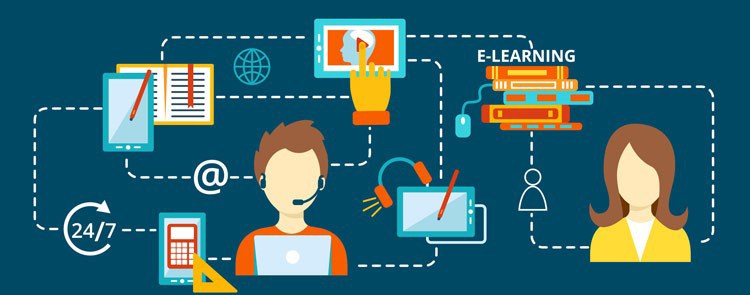How An LMS Benefits Blended Learning Courses
Providing career development opportunities for employees is a great way to improve the success of your organization. While there are different employee training techniques, blended learning is what we’d like to focus on today. By combining online and classroom learning, it helps employees get the most out of their training program. Here are 3 major reasons why blended learning is ideal for corporate training and development.
- It's the best of both worlds
As the name suggests, blended learning combines classroom and online training so that they complement each other. Complicated topics that require more attention are taught in the classroom, and lighter topics are taught online. This approach saves time and makes learning more efficient. - Provides employees with control
Blended learning allows learners to take control of their training by providing them with a personalized experience. With online learning, your employees can overcome time constraints and study at a pace that is convenient to them. Supplementary online learning materials can be accessed whenever necessary. - Cuts learning costs
Blended learning cuts down on the money spent on course instructors and training space. The ROI is also very high as employees tend to pick up the intended skills more effectively, improving their productivity.
Blended learning has changed the way employee training programs are delivered and improved employee performance and satisfaction. However, the success of a blended learning program is based on how it’s managed and presented to your employees. The right learning blend has to be chosen to make the training effective. With a Learning Management System, it’s very easy to organize and administer blended learning courses. Here are 5 of the ways in which an LMS benefits blended learning courses:
1. Facilitates Self-Paced Learning
Successful blended learning should allow your employees to learn at their own pace. With an LMS, employees can learn at a pace that is suitable for them. All the learning materials, including URLs, videos, documents, podcasts, and more, can be accessed by your employees whenever they need them. This improves training efficiency and knowledge retention by allowing learners to take enough time to process difficult topics and review known topics. Also, as an LMS provides multi-device support, your employees can learn through their laptops, smartphones, and tablets, providing them with more flexibility.
2. Supports Virtual Classrooms
With the help of an LMS, course instructors can conduct virtual sessions, connecting learners from any part of the world instantly. A stable internet connection is all that’s needed. This saves a substantial amount of time and cuts learning costs as several employees from different locations can be trained at once. This is especially handy for when your employees are working remotely. Virtual sessions can be recorded for future reference so your learners can always revisit what they’ve been taught. Because the complete blended learning program takes place from a single window in the LMS, it’s also easy to track the progress of each course.
3. Improves Learner Collaboration
Collaboration is an essential aspect of blended learning that has to be strengthened. Using an LMS, learners can interact and collaborate effortlessly. The dedicated online forum, internal chat, and group video and audio calls bring together learners and course administrators for hands-on activities, discussions, and debates. These discussions facilitate the flow and exchange of ideas and help your employees understand a topic from different perspectives. Employees tend to develop a feeling of community, which improves their morale. All these things make learning more effective, engaging, and interesting.
4. Reinforces Targeted Learning
Targeted learning is essential to ensure that your employees actually gain the necessary skills from a learning program. Whatever your employees learn should be relevant to their job responsibilities. With an LMS, you can create any number of learning programs, and your employees can select the course that applies to them. You can create courses for employees pertaining to a specific designation, role, or location. Managers can also suggest relevant courses for their employees. Your employees can provide their feedback about a course, which helps you to improvise and make the course more relevant and effective for future learners.
5. Provides Detailed Insights
Analytics are needed to continuously improve blended learning courses. With an LMS, you can get valuable insights that provide clarity on every aspect of your blended learning program. Any discrepancies in the learning programs can be identified and rectified at the early stage before they escalate. For instance, by generating reports about how course content is performing, you can identify the most popular learning topics among your employees and create more of that to improve knowledge retention. This makes the training effective and easy for your employees.
Using an LMS for blended learning programs eases every aspect of your course development and delivery. By supporting different learning styles, an LMS makes learning more flexible for your employees.







